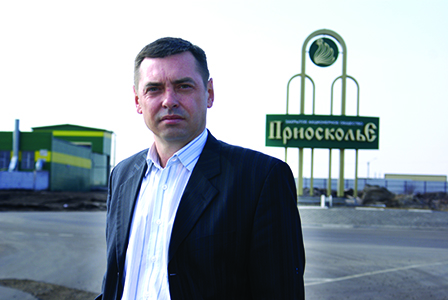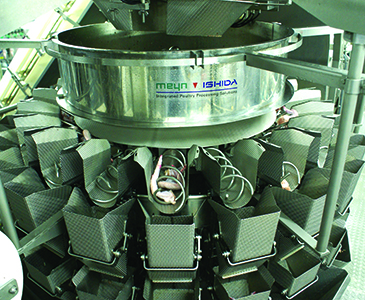The Meyn-Ishida alliance has completed the installation of a chicken processing and packing plant in Russia’s Belgorod province for poultry giant ZAO Prioskolie. The state-of-the-art plant includes Ishida’s recently-developed weigh-batching technology, which has revolutionised the speed, accuracy and compactness of styling and packing operations
Prioskolie is Russia’s largest poultry producer, involved in breeding, rearing, feed production and processing. Meyn-Ishida is an alliance formed between Ishida and Meyn, the leading poultry processing equipment and systems producer, in order to offer complete, single-source processing and packing plants, typically on greenfield sites.
 Sergey Chasovskikh
Sergey Chasovskikh
Scope of work
Prioskolie wished to scale up its operations and at the same time to reap the benefits of an integrated manufacturing execution system from a single supplier. Specifically, the company was looking for a plant that could ensure the highest yield from each delivery of live birds, together with the most efficient use of manpower and automation, and the fullest degree of control and traceability.
This implied that the chosen supplier would need to be expert in every department, from live bird handling and gas stunning through to the management of crates and trays.
Meyn-Ishida was selected by Prioskolie to design, supply and install a new 10,500 bph (birds per hour) plant at Valuyki, to be capable of expansion to 12,000 bph.

 Staff manning the batching sections of three of the Ishida Weigh-Batchers. Eight people per batcher can comfortably handle the cut-up pieces from a 10,500-bird per hour throughput. The remaining 8 stations per batching table allow plenty of room for future expansion.
Staff manning the batching sections of three of the Ishida Weigh-Batchers. Eight people per batcher can comfortably handle the cut-up pieces from a 10,500-bird per hour throughput. The remaining 8 stations per batching table allow plenty of room for future expansion. The coreless, stainless steel screws of the Ishida Screw Feeder Weighers gently but firmly move the product through to the weigh hoppers. The system works equally well for bone-in or boneless cuts, and for other fresh meat products.
The coreless, stainless steel screws of the Ishida Screw Feeder Weighers gently but firmly move the product through to the weigh hoppers. The system works equally well for bone-in or boneless cuts, and for other fresh meat products.